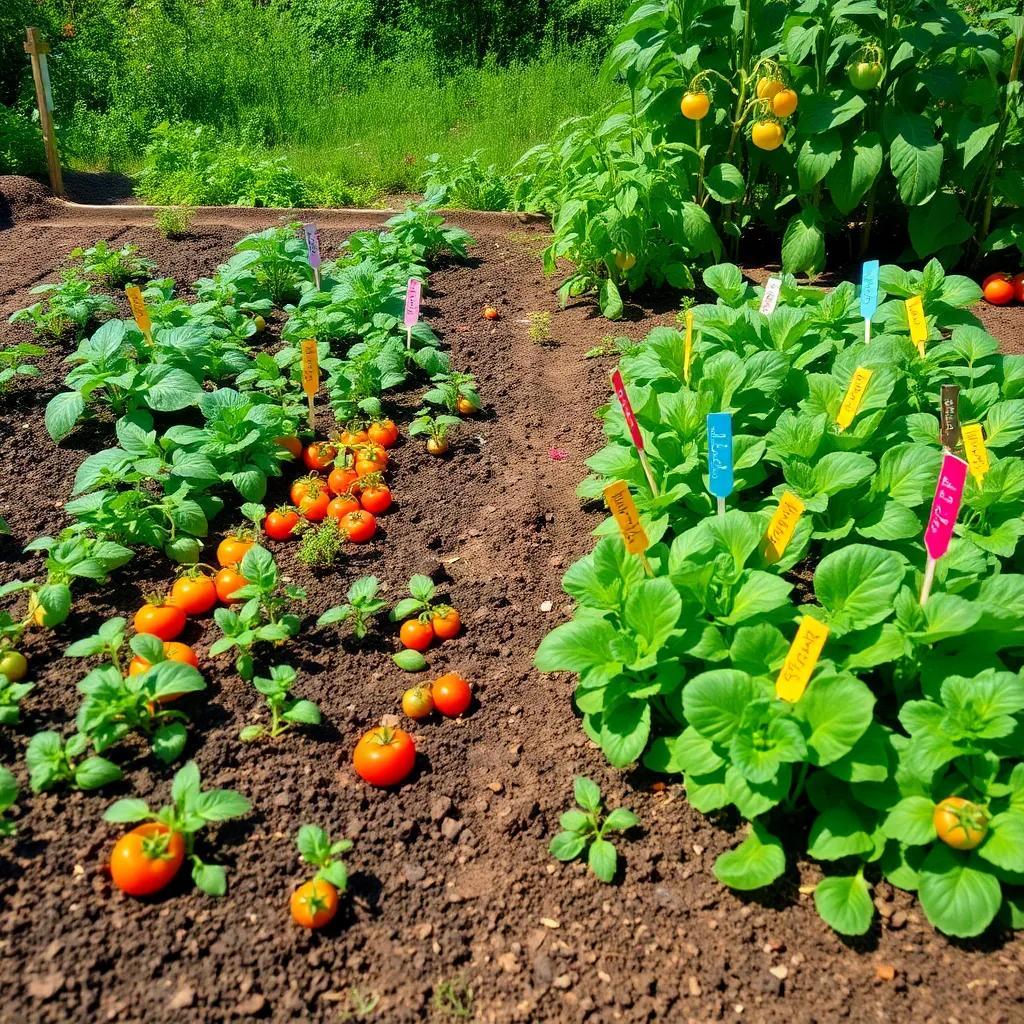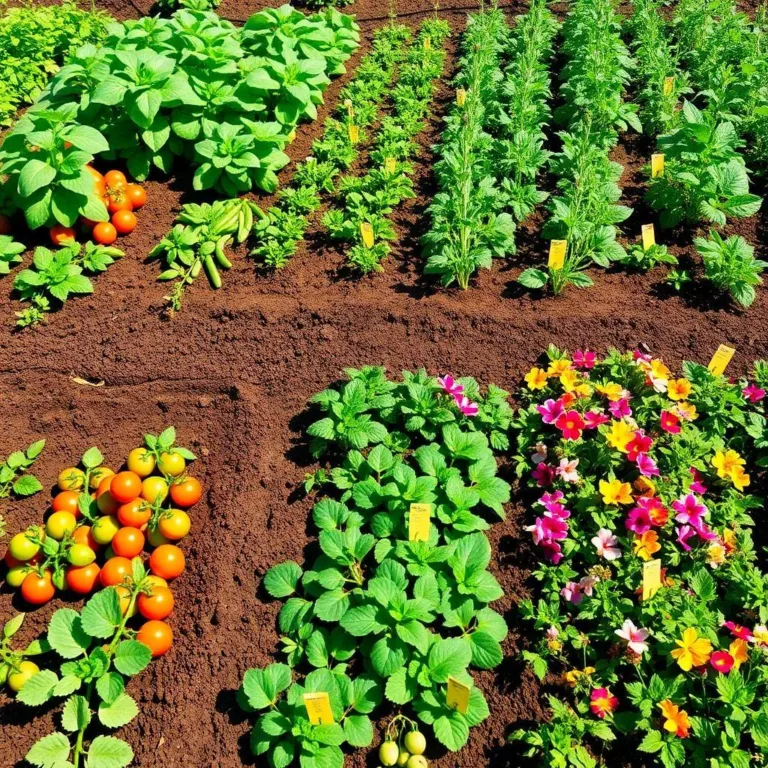Gardening is a fun adventure, and I’m excited to share some amazing techniques that can help my plants thrive! Have you ever wondered how to keep your garden healthy and productive? From crop rotation to double cropping and polyculture, there’s a world of tips waiting to transform my garden into a vibrant oasis! Let’s dig in and discover how these methods can make gardening even more enjoyable!
Benefits of Crop Rotation for Soil Health and Pest Management
When I think about my garden, I want it to be a thriving oasis, right? That’s where crop rotation comes in! This is a gardening technique that has many wonderful benefits for both soil health and pest management. It’s like giving your garden a little shake-up each season!
One of the biggest perks of crop rotation is its ability to prevent pests and diseases from taking over. You see, different plants attract different pests. So, when we change what we plant each year, we can mess with the pests’ party plans! For example, if you grew tomatoes last year, not planting them in the same spot again reduces the chance of those pesky tomato blights. Who even invited them to the garden, anyway?
Here are some of the benefits of crop rotation:
- Improves Soil Fertility: Different crops use different nutrients. For instance, legumes like beans can fix nitrogen in the soil, which is super helpful for future crops. So, when I plant beans one year and then corn the next, I’m giving my soil a nutrient boost!
- Reduces Weeds: By rotating crops, I can keep weeds guessing. Some plants grow tall and can shade the ground, blocking sunlight from the weeds. This means less weeding for me—a win-win!
- Breaks Disease Cycles: Many soil-borne diseases can hang around for years, waiting for their next plant host. Changing what I grow helps disrupt their plans and keeps my plants healthier.
In a nutshell, crop rotation is like a garden makeover! It leads to healthier soil, fewer pests, and happier plants. So, let’s shake things up and keep our gardens thriving!
Understanding Double Cropping: Maximizing Garden Space and Productivity
Have you ever wished for more veggies from your garden? Well, double cropping might just be the answer! This fun technique lets you grow two different crops in the same space within a single growing season. It’s like getting bonus points for your garden!
So, what makes double cropping so fantastic? First off, it helps me maximize my space. Instead of letting my garden sit empty after harvesting one crop, I can plant something else right away! For example, I might plant lettuce in early spring, then, after a quick harvest, I can follow it up with tomatoes. Yum!
Here’s why double cropping rocks:
- Extends the Harvest Season: I get to enjoy fresh veggies for longer! By planting quick-growing crops first, I can have a steady supply of delicious produce.
- Optimizes Resource Use: Different plants need various amounts of water and nutrients. So, when I plant a fast-growing crop after a slower one, I’m making the most of the soil’s nutrients.
- Keeps the Soil Covered: Growing crops throughout the season means the soil is always protected. This helps reduce erosion and keeps my garden looking great!
Of course, I need to plan carefully. Not all crops are great partners. Some might compete for resources, and that could be a recipe for disaster. But with a little thought and prep, double cropping can be a productive and fun way to maximize my garden!
So, let’s get growing and make the most of every inch of our gardens!

Polyculture: Enhancing Biodiversity and Ecosystem Resilience
Polyculture is like hosting a fabulous garden party where various plants can mingle and thrive together! This method of growing multiple plant species in the same area helps create a rich and vibrant ecosystem. It’s all about biodiversity! I love the idea of my garden being a bustling community of plants, each contributing something unique.
One of the biggest benefits of polyculture is pest control. When different crops are grown together, pests have a harder time finding their favorite plants. For example, some flowers can attract beneficial insects that feast on pesky aphids, saving my plants from damage. It’s like having little garden guardians!
Here are some key advantages of using polyculture:
- Improved Soil Health: Different plants have various root structures. This diversity helps the soil structure stay healthy and balanced. Some plants can even put nutrients back into the soil, reducing the need for added fertilizers!
- Efficient Space Utilization: Polyculture allows me to use vertical space—tall plants like corn can shade and support climbing crops like beans. This maximizes my growing area and creates a beautiful tapestry of greenery.
- Natural Pest Management: By combining plants that repel pests with those that attract beneficial insects, I create a natural pest control system. It reduces my reliance on pesticides, making my gardening more eco-friendly!
Polyculture is not just about growing a mix of plants; it’s about working with nature to create a resilient, self-sustaining garden. I find it exciting to experiment with different combinations of plants and watch my garden flourish!
Comparative Analysis: Crop Rotation vs. Double Cropping vs. Polyculture
Now that we’ve explored these gardening techniques, let’s break down how crop rotation, double cropping, and polyculture compare to one another. Each method has unique strengths, and knowing these can help me choose what’s best for my garden.
- Crop Rotation: This technique focuses on soil health and pest management. By changing the types of crops grown in a specific area over time, I can improve soil quality and lower pest populations. It’s great for long-term gardening plans! I like thinking of it as a strategy for sustainability.
- Double Cropping: On the other hand, double cropping is all about maximizing productivity in a single growing season. By planting two different crops sequentially, I can boost my harvests and keep my garden busy! If I’m short on space but want to yield more, this is my go-to.
- Polyculture: Lastly, there’s polyculture, which thrives on biodiversity. By planting different species together, my garden becomes a harmonious ecosystem! This technique not only supports pest control but also enhances my garden’s overall resilience.
In a nutshell, these techniques can be complementary! I could rotate crops in different sections while practicing double cropping and incorporating polyculture practices. Here’s a quick comparison:
| Technique | Focus Area | Key Benefits |
|—————–|——————————-|—————————————–|
| Crop Rotation | Soil health and pest control | Reduces pests, improves soil fertility |
| Double Cropping | Space and time management | Extends harvests, boosts productivity |
| Polyculture | Biodiversity and ecosystem | Enhances resilience, natural pest control |
No matter which method I choose, the goal is to create a thriving garden that produces delicious crops while being kind to the environment!
Practical Tips for Implementing These Gardening Techniques
Ready to put these gardening techniques into action? Let’s talk about some practical tips that can help me implement crop rotation, double cropping, and polyculture in my garden!
- Plan Ahead: Before planting, I like to sketch out a garden plan. Mapping out what crops I want to grow and where helps me visualize the layout. This makes it easier to rotate crops or consider which plants will share space well!
- Research Companion Plants: Certain plants are best friends in the garden, while others might not get along. I can look into companion planting to understand which plants work well together, improving overall growth and pest control.
- Keep Records: I find it super helpful to keep track of what I plant and where. A simple gardening journal can help me remember my crop rotation and planting successes (and failures!). This way, I learn and improve each year!
- Start Small: If I’m new to these techniques, I might want to test them out on a small scale first. This approach allows me to learn without feeling overwhelmed.
- Stay Flexible: Gardening is about experimentation. I should feel free to adjust my plans based on what works best in my environment. Sometimes plants surprise me!
By following these tips and staying open to learning, I can create a successful and vibrant garden that embraces all these fantastic techniques. Happy gardening!

